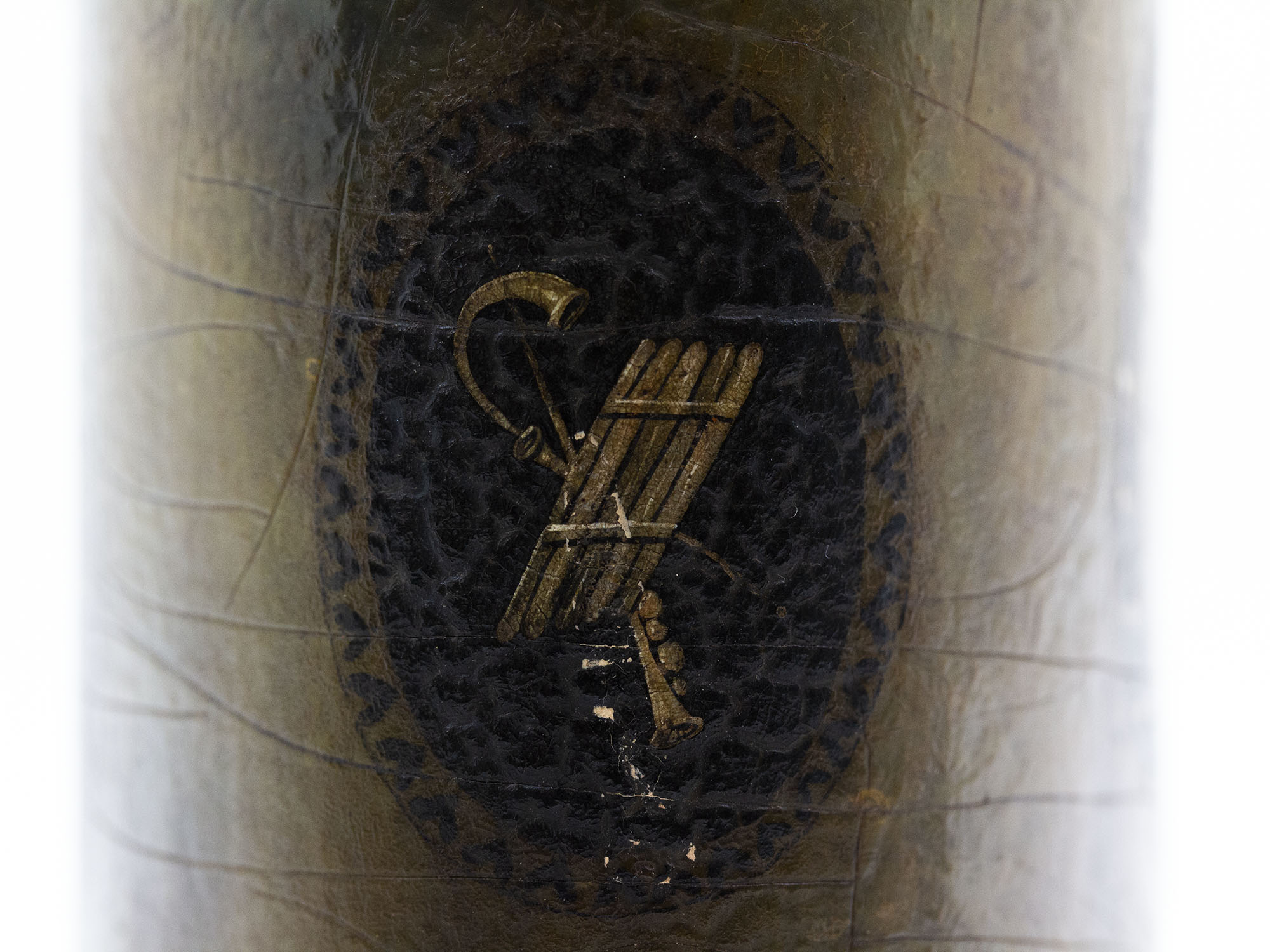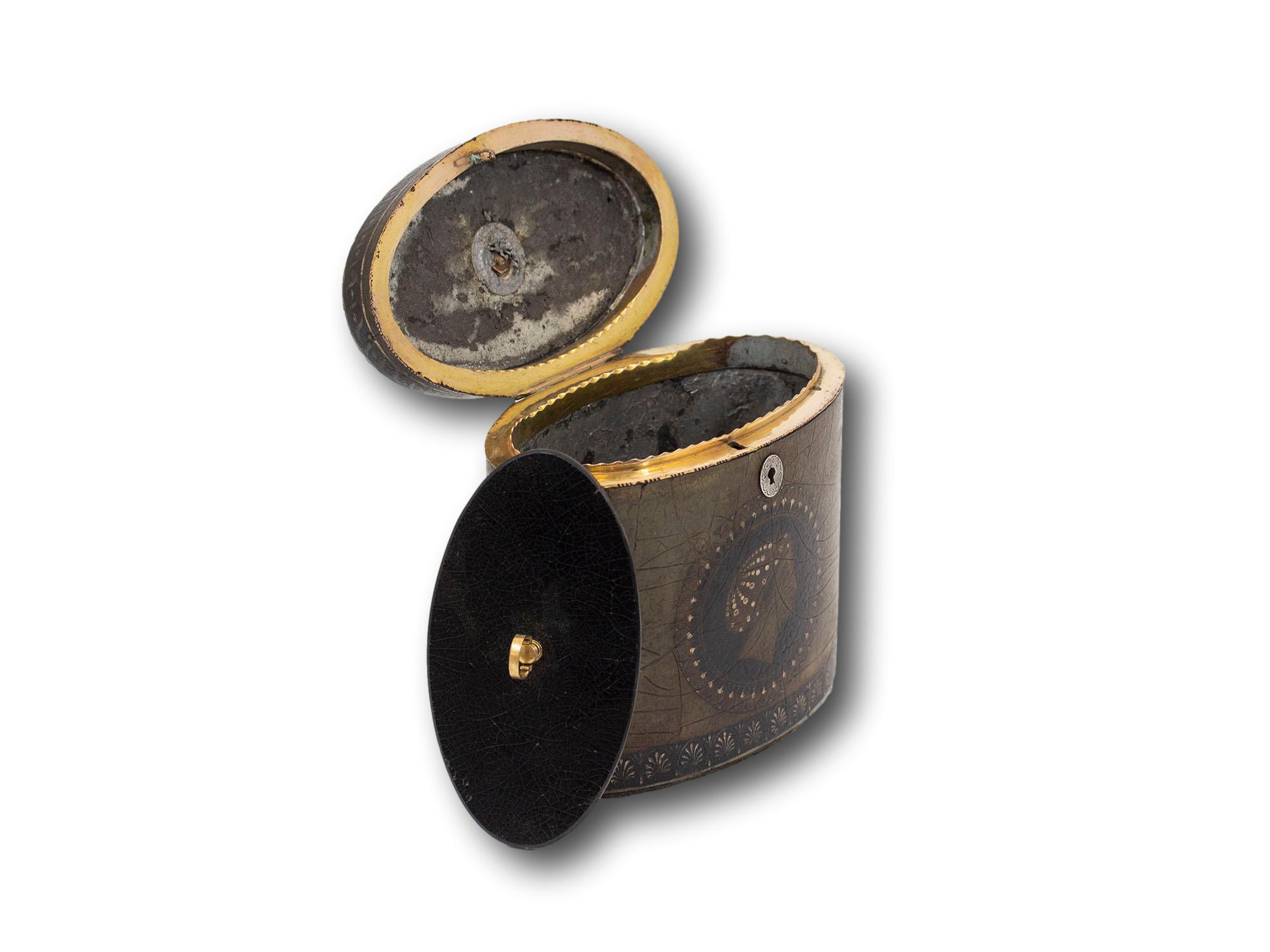Papier Mache Tea Caddy Henry Clay
SOLD
Stamped to the Handle Henry Clay From our Tea Caddy collection, we are delighted to introduce to the market this Papier Mache Tea Caddy by Henry Clay. The Henry Clay Tea Caddy of oval shape composed from papier mache is... Read More
Papier Mache Tea Caddy by Henry Clay dating to the Georgian period during the reign of George III stamped HC to the handle for Henry Clay
| Dimensions | 12.5 × 8 × 11 cm |
|---|---|
| Country | |
| Literature | |
| Medium | |
| Period | |
| Year | |
| SKU | 501554 |
Description
Description
Stamped to the Handle Henry Clay
From our Tea Caddy collection, we are delighted to introduce to the market this Papier Mache Tea Caddy by Henry Clay. The Henry Clay Tea Caddy of oval shape composed from papier mache is beautifully painted to the exterior with a slightly mottled deep green exterior with a border of anthemions to the base below four roundels around the centre band, two feature classical instruments while the other two feature female portraits after originals named ‘colour plate of a womens head’ – campanian black figured lekythos Sir William Hamilton (1730-1803) and ‘campainian hyria womans head with cap’. The exterior of the tea caddy is finished with the original loop handle stamped HC for Henry Clay. The interior of the Tea Caddy is mounted in brass with a single tea caddy lid with loop handle. The Papier Mache Tea Caddy by Henry Clay dates to the turn of the 19th century George III period circa 1800.
The Papier Mache Tea Caddy by Henry Clay comes complete with a working lock and tasselled key.
Measurements (inches) 4.33 High x 4.92 Wide x 3.15 Deep
Literature Mark Goodger 25th Anniversary Catalogue page 21
Reference Royal Academy of Arts object number 17/4725 colour plate of a woman’s head, campanian black figured lekythos by Sir William Hamilton (1730-1803) and campanian hydria womans head with cap London, British Museum Gr (BM Vases F 227)
Henry Clay was an assistant to one of the pioneers in papier-mache by the name of John Baskerville who started to imitate the highly polished items, that were being imported from Japan, using lacquered papier-mache. Which would become known as “japanning”. By 1772 Clay had learned enough to start up his own business and in the same year patented a new process for making “paperware” which involved sheets of paper being soaked in paste and pressed together on a plate. Once separated from the plate they were baked in a hot stove to remove any flexibility, whilst at the same time being coated in varnish or oil. The final product was used like wood, and once coated with colour and oils could be polished to a high shine. Around 1785 Henry Clay acquired a retail premise in London’s Covent Garden. George III was one of his patrons by 1792 and Clay adopted the title “Japanner to His Majesty.”
Papier Mache is a man made material consisting of paper pieces bound with an adhesive, such as glue, starch, or wallpaper paste.
With every purchase from Mark Goodger Antiques, you will receive our latest catalogue, a Certificate of Authenticity, detailed care instructions for your chosen piece and an independent invoice (for insurance purposes) will be enclosed. As well as being protected by a no-hassle, money-back policy, your piece will be entirely insured during the shipping process to ensure the safety of your item.
Additional information
Additional information
| Dimensions | 12.5 × 8 × 11 cm |
|---|---|
| Country | |
| Literature | |
| Medium | |
| Period | |
| Year | |
| SKU | 501554 |




















